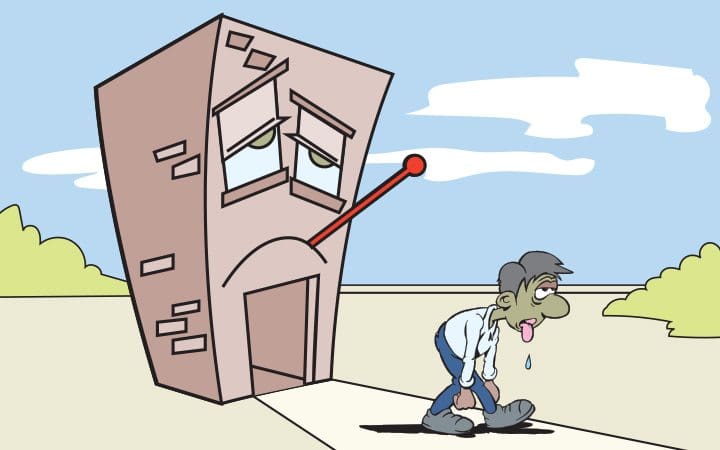
Sick House (or “Sick Building”) Syndrome occurs when a house can’t “breathe” to rid itself of indoor pollutants, resulting in poor indoor air quality – a “sick house.” Inadequate ventilation is the most common cause. This allows pollutants to build up, causing potential health risks to the home’s occupants. Young children, the elderly, and some chronically ill persons are most susceptible to the effects of Sick House Syndrome.
Common sources of indoor pollution include tobacco smoke, certain carpeting materials, furnaces, fireplaces, candles, pressed wood cabinets and furniture, and household cleaning products. Moisture build-up, although not a pollutant itself, can also be harmful in a house as it can cause mold growth inside walls, crawlspaces, and other areas.
Source control is usually the most effective way to improve indoor air quality. In some cases, eliminating the specific sources of indoor pollution – for example, removing carpets, and repairing or maintaining furnaces – may be all that is necessary.
For offending substances such as tobacco smoke, cleaning products, and moisture buildup, improving ventilation is a key means of decreasing indoor pollution. Many newer homes are so well insulated and sealed that only a very limited amount of fresh air can get in. Effective ventilation requires the home to have a complete air change every three hours. In this situation, using attic or window fans and opening windows when weather permits are easy and inexpensive ways to increase ventilation.
More hazardous materials such as asbestos and lead do not normally cause problems if they are undisturbed, but these and other dangerous substances should be analyzed by a qualified professional to determine if encapsulation, abatement, or removal is warranted.
– From Glenn Blight, RHI for Pillar to Post